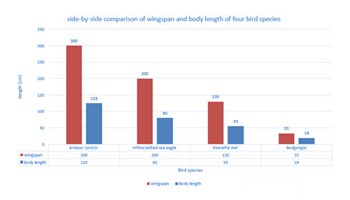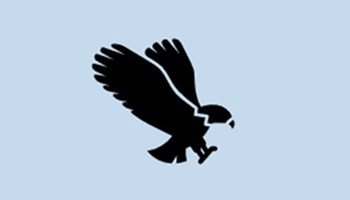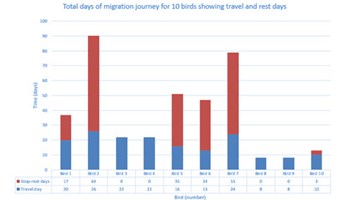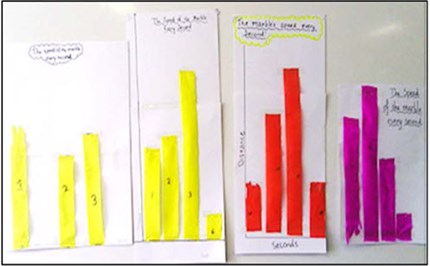Please note: This site contains links to websites not controlled by the Australian Government or ESA. More information here.
reSolve: Modelling Motion: Years 5 and 6
In this sequence of lessons students use a streamer graph to track speed and develop the concept of speed as time per unit travelled. They experiment with rolling a ball up and down a slope and gather data to make predictions. Each lesson is outlined in detail including curriculum links, vocabulary, materials needed, sample answers, discussion points and student resources. This sequence is part of the reSolve: Mathematics by Inquiry program.
Additional details |
|
| Year level(s) | Year 5, Year 6 |
|---|---|
| Audience | Teacher |
| Purpose | Teaching resource |
| Format | Downloadable resources |
| Teaching strategies and pedagogical approaches | Mathematics investigation |
| Keywords | speed, data, time, graph |
Curriculum alignment |
|
| Curriculum connections | Numeracy, Science, Technologies, Critical and creative thinking |
| Strand and focus | Measurement, Build understanding, Apply understanding |
| Topics | Using units of measurement, Data representation and interpretation |
| AC: Mathematics (V9.0) content descriptions |
AC9M5ST01
Acquire, validate and represent data for nominal and ordinal categorical and discrete numerical variables to address a question of interest or purpose using software including spreadsheets; discuss and report on data distributions in terms of highest frequency (mode) and shape, in the context of the data
AC9M6ST01
Interpret and compare data sets for ordinal and nominal categorical, discrete and continuous numerical variables using comparative displays or visualisations and digital tools; compare distributions in terms of mode, range and shape
AC9M5M01
Choose appropriate metric units when measuring the length, mass and capacity of objects; use smaller units or a combination of units to obtain a more accurate measure
AC9M5SP03
Describe and perform translations, reflections and rotations of shapes, using dynamic geometric software where appropriate; recognise what changes and what remains the same, and identify any symmetries
AC9M5N07
Solve problems involving division, choosing efficient strategies and using digital tools where appropriate; interpret any remainder according to the context and express results as a whole number, decimal or fraction
AC9M5ST03
Plan and conduct statistical investigations by posing questions or identifying a problem and collecting relevant data; choose appropriate displays and interpret the data; communicate findings within the context of the investigation
AC9M5ST01
Acquire, validate and represent data for nominal and ordinal categorical and discrete numerical variables to address a question of interest or purpose using software including spreadsheets; discuss and report on data distributions in terms of highest frequency (mode) and shape, in the context of the data
AC9M6M01
Convert between common metric units of length, mass and capacity; choose and use decimal representations of metric measurements relevant to the context of a problem
AC9M6N09
Use mathematical modelling to solve practical problems, involving rational numbers and percentages, including in financial contexts; formulate the problems, choosing operations and efficient calculation strategies, and using digital tools where appropriate; interpret and communicate solutions in terms of the situation, justifying the choices made
AC9M5N04
Recognise that 100% represents the complete whole and use percentages to describe, represent and compare relative size; connect familiar percentages to their decimal and fraction equivalents |
| Numeracy progression |
Additive strategies (P9)
Interpreting fractions (P6, P8) Interpreting and representing data (P4) Multiplicative strategies (P7, P8) Number and place value (P8) Proportional thinking (P1) Understanding geometric properties (P5) Understanding money (P8) Understanding units of measurement (P8) |
Copyright details |
|
| Organisation | reSolve Maths by Inquiry |
| Copyright | © Australian Government Department of Education, Skills and Employment 2021. Creative Commons BY-NC-SA 4.0. |
Related resources
-

Osprey bird dimensions
In this lesson, students investigate measurement data related to the osprey. Students represent and interpret data related to wingspan and body length. They investigate patterns in data to describe any relationships.
Resource details -

Career profile: Sacha Dench, Migratory animal research scientist
This career profile on Sacha Dench, a migratory animal research scientist, demonstrates the intersection of science and mathematics knowledge and skills in a real-world context.
Resource details -

Flight of the osprey infographic
In this lesson, students use data acquired during their learning about the osprey and information sourced online to design and create an infographic.
Resource details -

Osprey migration data
In this lesson, students acquire data related to the migration of the osprey. Students represent and interpret the data, discussing and reporting on the data distribution. They compare two types of charts to decide which type is best to display the dataset.
Resource details
